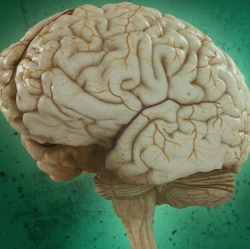
Delivering an electrical current to a part of the brain involved in movement control has proven successful in treating many Parkinson’s disease patients. This approach, known as deep brain stimulation, requires implanting electrodes in the brain, a complex procedure that carries some risk to the patient.
Now, MIT researchers, collaborating with investigators at Beth Israel Deaconess Medical Center (BIDMC) and the IT’IS Foundation, have come up with a way to stimulate regions deep within the brain using electrodes placed on the scalp. This approach could make deep brain stimulation noninvasive, less risky, less expensive, and more accessible to patients.
“Traditional deep brain stimulation requires opening the skull and implanting an electrode, which can have complications. Secondly, only a small number of people can do this kind of neurosurgery,” says Ed Boyden, an associate professor of biological engineering and brain and cognitive sciences at MIT, and the senior author of the study, which appears in the June 1 issue of Cell.
Doctors also use deep brain stimulation to treat some patients with obsessive compulsive disorder, epilepsy, and depression, and are exploring the possibility of using it to treat other conditions such as autism. The new, noninvasive approach could make it easier to adapt deep brain stimulation to treat additional disorders, the researchers say.
“With the ability to stimulate brain structures noninvasively, we hope that we may help discover new targets for treating brain disorders,” says the paper’s lead author, Nir Grossman, a former Wellcome Trust-MIT postdoc working at MIT and BIDMC, who is now a research fellow at Imperial College London.
